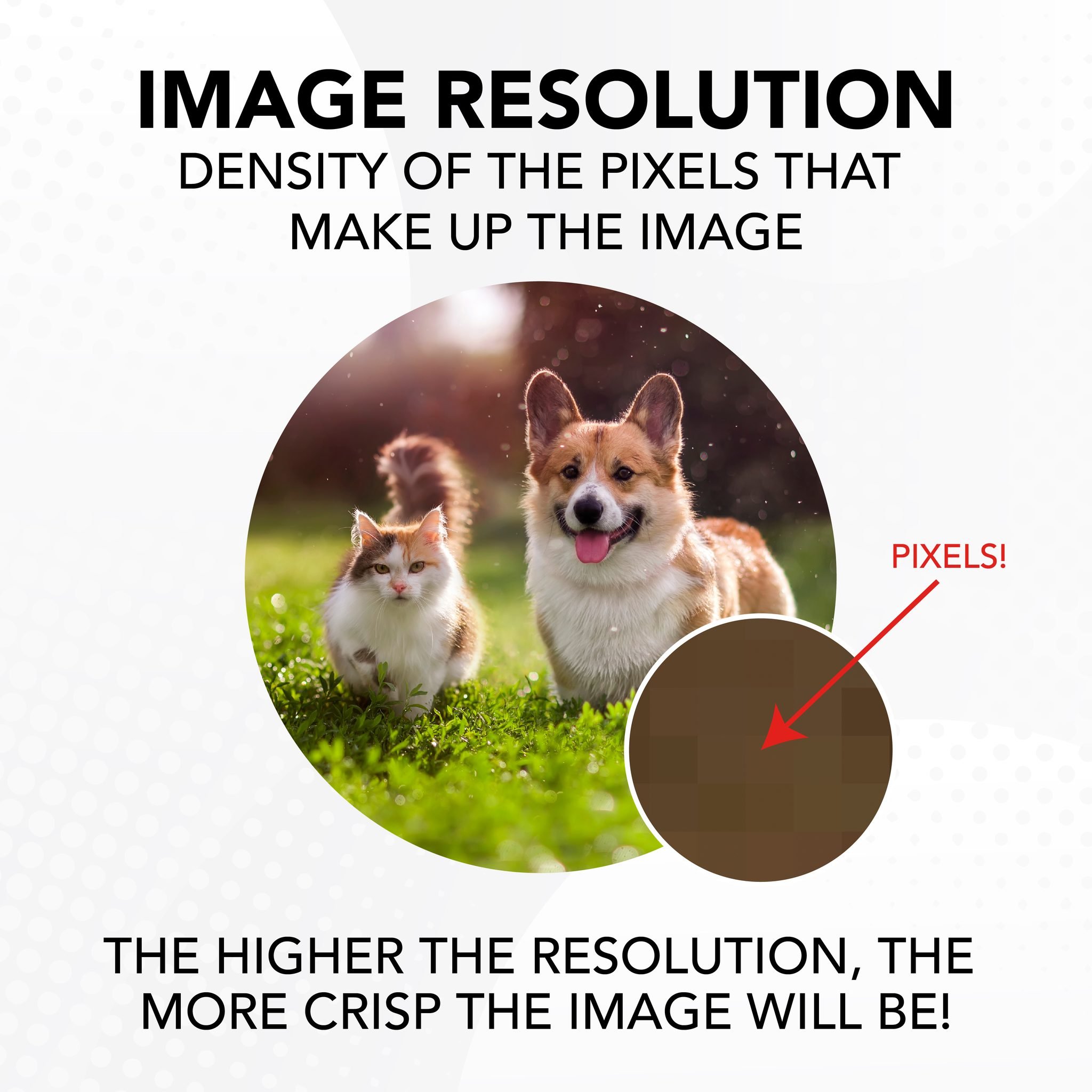Print Quality - Image Resolution
At Sun Printing, we understand that achieving stunning and accurate printed results requires more than just great design; it hinges on the meticulous consideration of image resolution. Whether you're a seasoned graphic artist or a newcomer to the world of printing, understanding the nuances of image resolution and its direct correlation to print quality is paramount. Join us as we unravel the intricacies of this essential element, offering insights and practical tips to ensure your images translate seamlessly from screen to print, leaving a lasting impression with every project.
What is Image Resolution?
Resolution refers to the amount of detail or clarity in an image. The concept of resolution is associated with raster graphics, or images made up of pixels (such as photography). An image’s resolution is directly determined by its pixel density. The higher the pixel density, the higher resolution an image has. High resolution images appear crisp and detailed, while low resolution images often appear jagged and fuzzy, and sometimes you can even see the individual square pixels if you look closely.
What is DPI?
So what is DPI (Dots Per Inch), and how is it related to resolution? DPI is the unit of measure used to determine a print image’s resolution. When an image is prepared for printing, pixels are converted to ink dots. DPI refers to the number of pixels/dots per inch in a printed image. DPI is relevant when printing because it determines how fine the printed dots are and therefore affects the quality and sharpness of the final product.
Resolution and Print Quality Standards
When preparing images for print, designers should check to ensure graphics meet resolution requirements. The industry standard for print image resolution is a minimum of 300ppi/dpi. Any images with a resolution under 300ppi/dpi will produce low quality products that look blurry. Images intended for web or digital purposes are often sized at 72ppi/dpi, therefore if you are sourcing images from the web, it’s important to check their resolution before using them in a print design.
Understanding the intricate relationship between image resolution and print quality can truly be the difference between a visually captivating masterpiece and a lackluster print. By heeding the advice shared in this exploration of image resolution, you're armed with the knowledge to meticulously craft each project with the precision it deserves. Let this newfound understanding empower you to bridge the gap between the digital and physical worlds, creating prints that not only meet industry standards but also exceed your creative aspirations!



